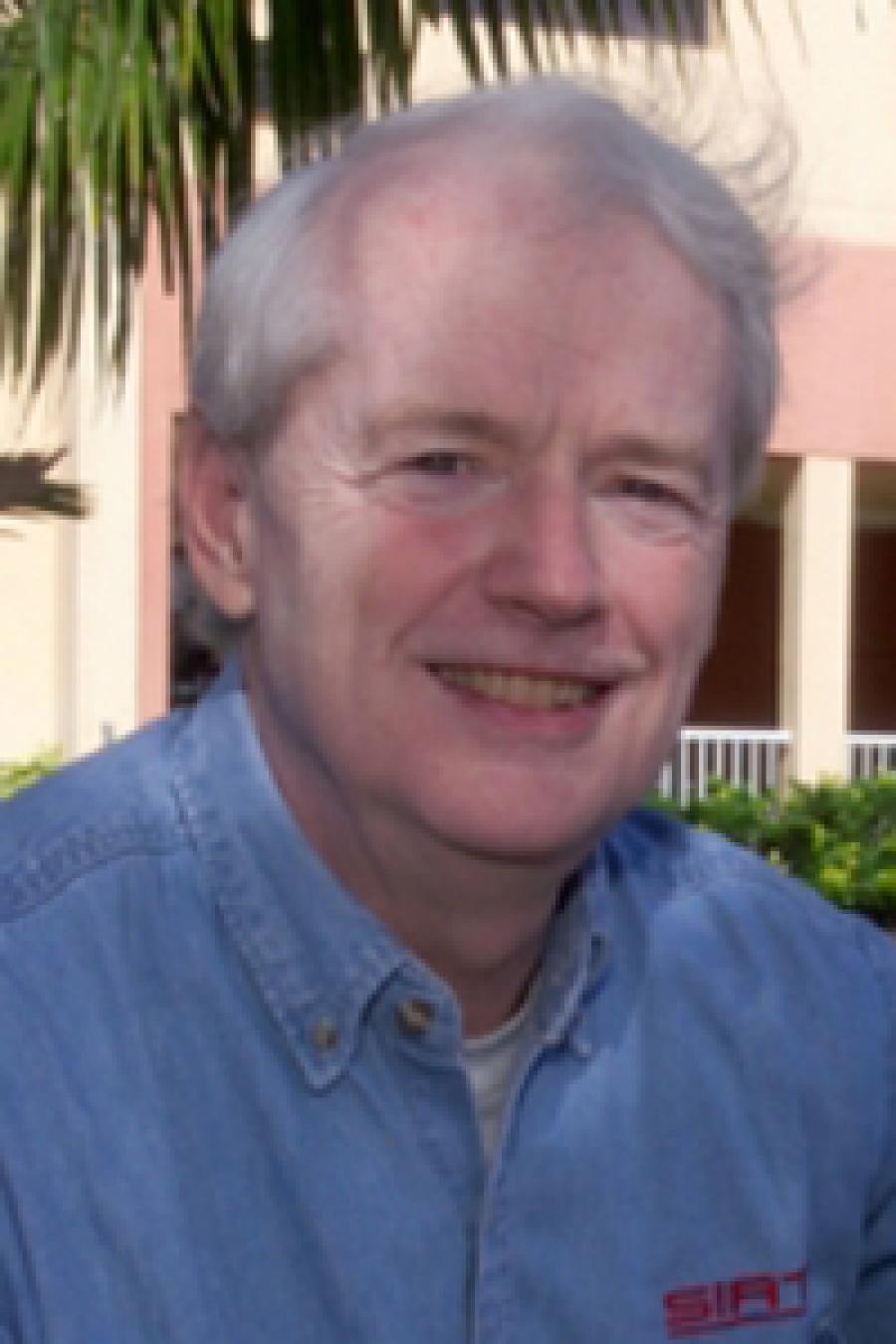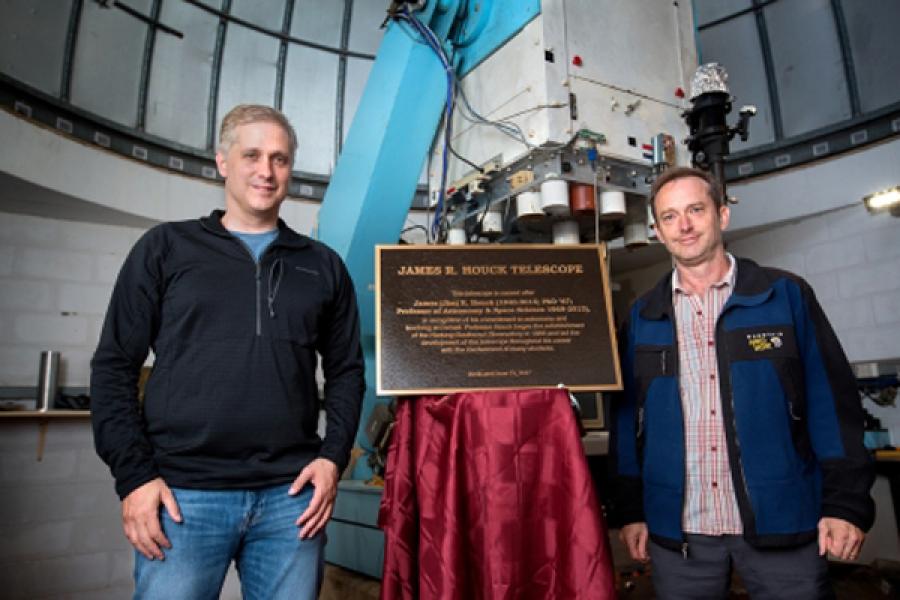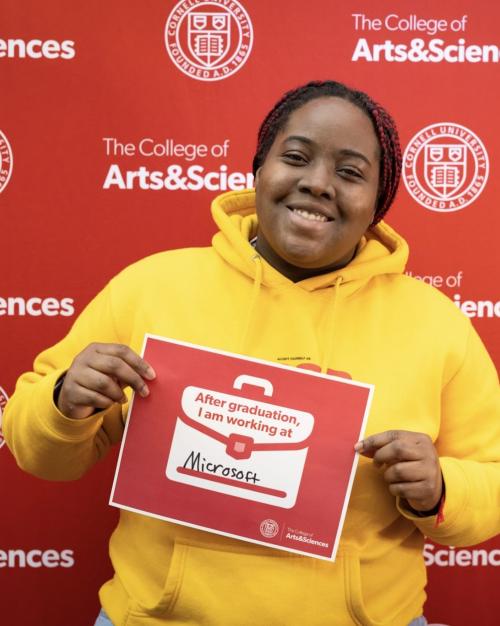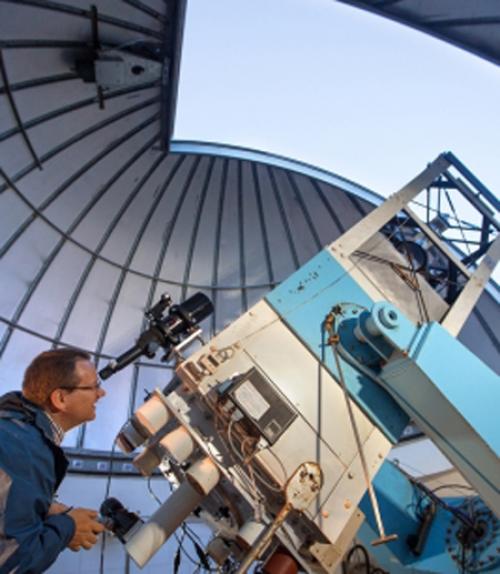Cornell astronomers gathered atop Mount Pleasant at sunset June 25 to honor one of their own. The 25-inch reflecting telescope at the university’s Hartung-Boothroyd Observatory was named in memory of the late James R. Houck.
Houck, a Cornell professor of astronomy, who was a major contributor in developing infrared spectroscopy for astrophysics, died in September 2015. He was part of NASA’s first major infrared space mission, the Infrared Astronomical Satellite, or IRAS, and he served as the principal investigator for the infrared spectrograph on NASA’s Spitzer telescope.
The newly dedicated large telescope sits under a dome high above Varna, New York. Houck and his student, George Gull ’72, built it from scratch 43 years ago. Parts were machined by high school students at the local Board of Cooperative Educational Services (BOCES) and at Ithaca engineering firm Therm, Inc. The instrument’s brawn relies on a parabolic mirror polished from a 1930s Pyrex test blank (provided by retired astronomy professor William Shaw) from the Hale telescope atop Mount Palomar, California. The Cornell observatory and telescope were completed in 1974.“It’s built in a way that you can teach students a lot of about professional telescopes,” said James Lloyd, associate professor of astronomy, at the dedication. Lloyd teaches his own students with the telescope. “For students, it lets you do the things you need to understand in order to run a much larger telescope. That comes from Jim’s real dedication to teaching and to students. I’m pleased we’re formally naming this telescope.”
While the telescope now honors its builder Houck, the observatory is named for chemical industrialist M. John Hartung (Class of 1908) and Boothroyd, founder of Cornell’s astronomy department.
The Houck Telescope is capable of extraordinary research, said Jonathan Lunine, the David C. Duncan Professor in the Physical Sciences and director of the Cornell Center for Astrophysics and Planetary Science.
“We’ve had a chance to observe transiting extrasolar planets with two of my classes,” Lunine explained at the dedication. “It’s a very high-quality telescope. To be able to see the light from a star begin to dim at the right time for the predicted transit – as the planet moves across the parent star – was an incredible thrill.”
Gull, a mechanical engineer working in the astronomy department, reminisced about building the observatory on evenings and weekends, completing the telescope off-site at the “rocket lab” in the Space Sciences Building. “We got it all assembled and got it all working,” he said.Houck’s sons, Chris Houck ’90 and Rob Houck ’93, returned to Ithaca for the dedication. “The observatory meant a lot to him. We would come up here occasionally, but I know he enjoyed bringing new people up here,” said Chris Houck.
“He loved teaching undergraduate and graduate students. He was very passionate about it,” said Rob Houck, who recalled being coaxed by his father to mow the observatory’s yard. “My dad also enjoyed the visceral pleasure of staring at the stars all night with a telescope.”
This story also appeared in the Cornell Chronicle.






